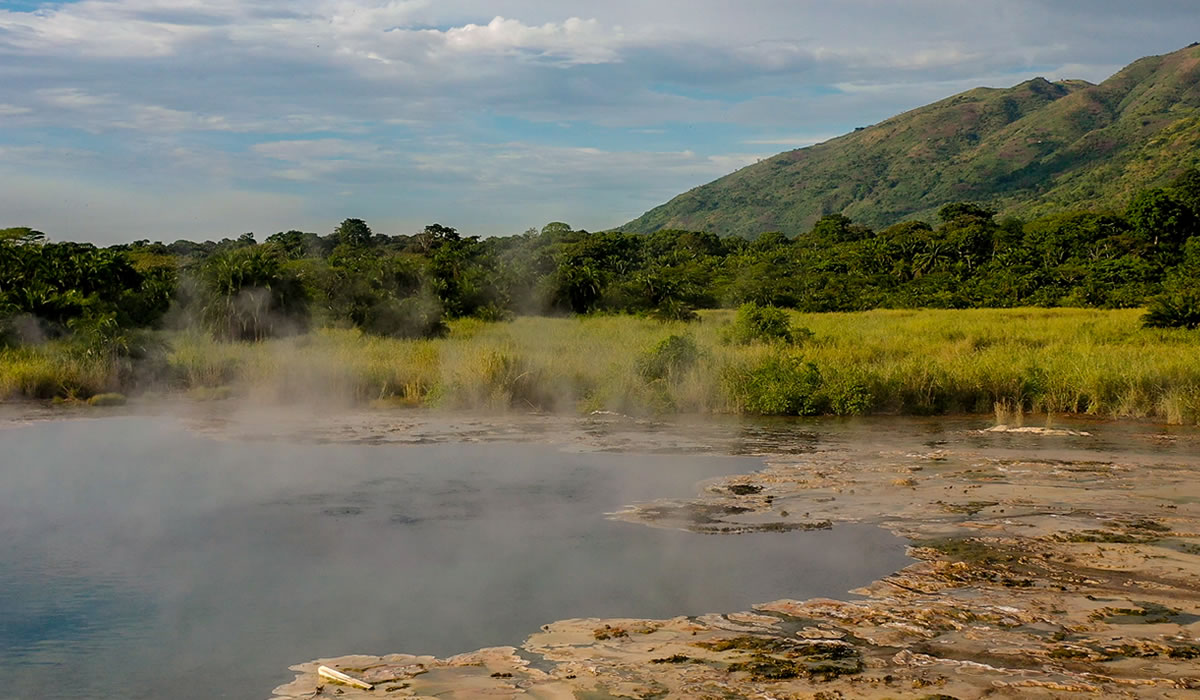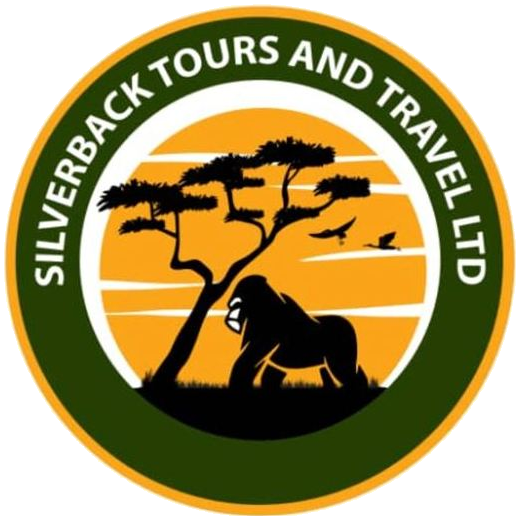Tucked away in the remote lowlands of western Uganda, Semuliki National Park remains one of the country’s most enigmatic and underrated destinations. Unlike Uganda’s more famous parks such as Queen Elizabeth or Bwindi, Semuliki offers a truly off-the-beaten-path experience. Here, tropical rainforest meets open savannah, ancient hot springs bubble with geothermal energy, and rare bird species fill the air with song in a setting as wild as it is beautiful.
Covering an area of 220 square kilometers, Semuliki lies in the Albertine Rift Valley, bordering the Democratic Republic of Congo and nestled within the Ituri Forest ecosystem, one of Africa’s oldest and most biodiverse forests. The park offers a fascinating blend of Central African and East African ecological zones, making it a haven for wildlife enthusiasts, birdwatchers, and adventurous travelers eager to explore Uganda’s tropical frontier.

What Makes Semuliki Special?
Semuliki National Park is unique among Uganda’s protected areas for its lowland rainforest habitat, a type of forest more commonly found in the Congo Basin. It is the only true lowland tropical rainforest in East Africa, and as such, it supports a unique set of flora and fauna that differs markedly from other Ugandan parks.
The park is especially renowned for its biodiversity, including over 441 bird species many of them rare or endemic and more than 60 species of mammals, including elusive forest elephants and pygmy hippos. Add to this the Sempaya hot springs, mysterious swamp trails, and rich cultural history, and you have a destination that, while less frequented, is richly rewarding for those who make the journey.
Things to See and Do in Semuliki National Park
-
Sempaya Hot Springs
Perhaps the most iconic attraction in Semuliki is the Sempaya Hot Springs, a pair of geothermal wonders known locally as the “male” and “female” springs. The female spring, Nyansimbi, meaning “the female ancestors,” is particularly dramatic boiling at over 100°C, with steam visible from miles away. Visitors can witness the bubbling water gushing several meters into the air and even boil eggs or bananas in the spring, a fun and quirky tradition!
A guided walk to the hot springs from the park’s main gate takes you through lush rainforest, offering the chance to see monkeys, birds, butterflies, and medicinal plants along the way.
-
Bird Watching
Semuliki is a birdwatcher’s paradise. With over 440 recorded species, including 216 forest specialists, the park ranks among the top birding destinations in Africa. Many of these species are Central African endemics not found elsewhere in East Africa.
Key species include:
- Nkulengu Rail
- Yellow-throated Cuckoo
- White-crested Hornbill
- Red-billed Dwarf Hornbill
- Congo Serpent Eagle
- Long-tailed Hawk
Birding is best done along the Kirumia Trail, a 13-km route through pristine rainforest that leads all the way to the Semuliki River.
-
Nature Walks and Forest Hikes
Semuliki’s dense rainforest and swampy terrain make for thrilling nature walks. The Red Monkey Trail (11 km) takes you through the eastern part of the park and offers a chance to spot De Brazza’s monkeys, a rare and shy primate species. Another highlight is the Kirumia Trail, which winds through thick forest to the river and is ideal for wildlife spotting and birding.
These trails provide opportunities to see black-and-white colobus monkeys, red-tailed monkeys, bush babies, and even forest buffalo and forest elephants, though these tend to be elusive and more active at night.
-
River Semuliki and the Ituri Forest Edge
The Semuliki River, which forms the international boundary with the DRC, offers scenic views and wildlife sightings. This river is a key water source for the park’s animals and attracts a range of species, including hippos, crocodiles, and wading birds.
While boat rides are not commonly available due to logistical challenges, walking trails along the river’s edge offer peaceful and rewarding encounters with nature.
-
Cultural Encounters with the Batwa
Semuliki is home to the Batwa pygmies, one of Africa’s oldest indigenous tribes and traditional forest dwellers. The Batwa have lived in and around the Ituri Forest for thousands of years and retain a deep knowledge of the land, its plants, and its wildlife.
Community visits to Batwa villages provide a respectful and enriching way to learn about their history, customs, and the challenges they face today. Visitors may be treated to traditional songs, dances, storytelling, and demonstrations of hunting and herbal medicine techniques.
When Is the Best Time to Visit Semuliki National Park?
Semuliki can be visited year-round, but the best time to go is during the dry seasons: December to February and June to August. These months offer easier access to trails and better conditions for birdwatching and hiking.
That said, Semuliki is a tropical rainforest, and rain can fall at any time. The wet seasons, particularly from March to May and September to November, bring heavy rains that may make some trails and roads muddy and difficult to navigate. However, these months are also the best time for butterflies, lush greenery, and fewer tourists.
Regardless of the season, it’s advisable to pack waterproof clothing, insect repellent, and good hiking boots, especially if you plan to explore the forest trails.
Where to Stay Near Semuliki National Park
While accommodation options within the park itself are limited, there are several lodges and campsites located nearby, particularly in the Fort Portal and Semuliki Wildlife Reserve areas.
- Semuliki Safari Lodge
Located within the Semuliki Wildlife Reserve (not the national park, but adjacent), this high-end lodge offers luxury tented accommodation, gourmet meals, and guided wildlife experiences. It’s an excellent base for exploring both the reserve and the national park.
- Ntoroko Game Lodge
Located on the shores of Lake Albert, this lodge combines water views with safari comfort. It’s a good option for those wanting a tranquil setting and access to both Semuliki and nearby attractions.
- Bumaga Campsite
Operated by Uganda Wildlife Authority, this is the main campsite at the Sempaya Gate. It’s a budget-friendly choice for travelers looking to stay close to the park’s entrance. Basic accommodation and camping facilities are available.
- Fort Portal Hotels and Guesthouses
For more variety, travelers can stay in Fort Portal, about 2 hours’ drive from the park. Options range from budget guesthouses to luxury stays like:
- Kyaninga Lodge – a stunning upscale lodge set on a crater lake.
- Rwenzori View Guesthouse – a comfortable mid-range option with a homely feel.
- Mountains of the Moon Hotel – offers modern amenities in a colonial-style setting.
Fort Portal also makes a great base for exploring nearby attractions like Kibale Forest, Rwenzori Mountains, and Queen Elizabeth National Park.
Getting to Semuliki National Park
Semuliki is located in Bundibugyo District, about 52 km from Fort Portal. The park can be reached by road in several ways:
- From Kampala: A scenic 6–8 hour drive via Fort Portal (about 375 km).
- From Fort Portal: The road to Bundibugyo is winding and mountainous, with steep descents into the Semuliki Valley. A 4WD vehicle is highly recommended, especially during the rainy season.
- By Air: There are charter flights available from Entebbe Airport or Kajjansi Airstrip to Kasese or Semuliki Airstrip, though they must be arranged in advance and can be costly.
Travel Tips for Visiting Semuliki
- Bring Binoculars: Especially if you’re a birdwatcher—many of the park’s species are shy or hidden in the canopy.
- Hire a Local Guide: They know the forest intimately and can point out birds, animals, and medicinal plants you would otherwise miss.
- Carry Cash: Local areas may not have ATMs, and most small lodges do not accept credit cards.
- Pack Light but Prepared: Essentials include rain gear, mosquito repellent, a hat, water bottles, and snacks for hikes.
- Respect Local Communities: When visiting Batwa villages or other communities, ask for permission before taking photos and consider supporting local crafts.
For travelers yearning for a different kind of safari one filled with mystery, primal rainforest, and untamed beauty, Semuliki National Park is a dream come true. Here, you won’t find tourist crowds or big five game drives, but you will encounter a deeply immersive, sensory experience that connects you with one of the oldest ecosystems on the planet.
Whether you’re watching steam rise from the Sempaya hot springs, hearing the haunting calls of forest birds at dawn, or following a Batwa guide through the jungle, Semuliki delivers moments of awe that are as rare as they are unforgettable.
So, if your journey through Uganda includes a quest for the unusual, the raw, and the remote—make room in your itinerary for Semuliki. You’ll leave with stories no one else has—and the soul of the forest still whispering in your ear.

